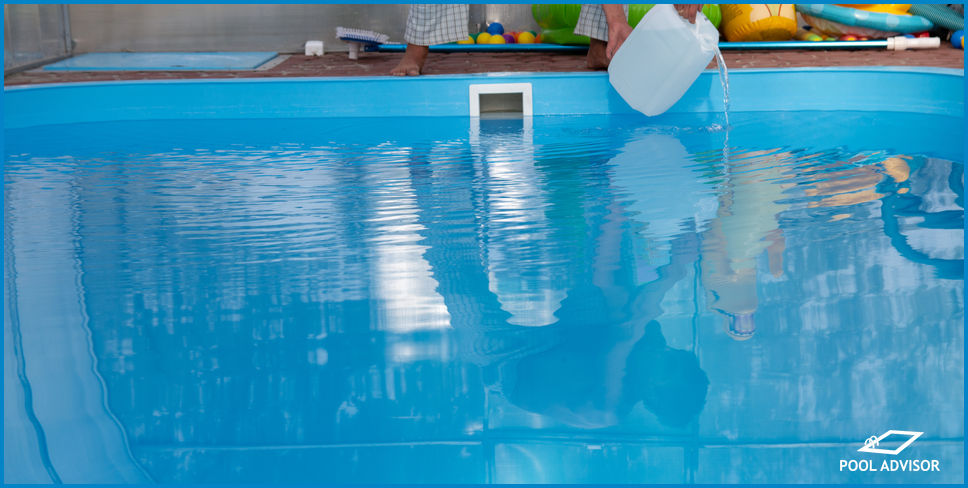
I Put Too Much Algaecide In My Pool - Is It A Problem?
Algaecide is a great tool for preventing algae growths and is also commonly included in the treatment process for ongoing algae infestations. Because algaecide has these benefits, you may be wondering: can you put too much algaecide in a pool?
The answer is yes, you can. Too much algaecide can cause a variety of problems for your pool, so it is important to add the correct amount.
In this article, we will discuss the effects of overusing algaecide, how to get rid of too much algaecide in a pool, and how to prevent the overuse of algaecide in the future.
Effects Of Overusing Algaecide Products
Foaming
The most common side effect of using too much algaecide in your pool is the development of foam. Algaecides usually contain chemicals known as surfactants, which are commonly found in soaps because they work to produce bubbles.
When there is too much algaecide in your pool, any water agitation caused by your pump or splashing about can lead to the production of foam and tiny bubbles.
While many consider this dangerous for your pool’s filter system, in reality having small bubbles of air running through your lines is typically not an issue, unless you start to see problems with pump priming.
For more info, check out this guide on how to remove algaecide foam.
Skin And Eye Irritation
Swimming in pools with too much algaecide is commonly associated with skin and eye irritation caused by excess chemicals in the pool.
It is a good idea to avoid swimming in pools that contain too much algaecide until it has had a chance to react and degrade.
Cloudy Water
The use of algaecide products increases the hardness of your pool water by introducing more dissolved solids such as metals or polymers. If too much algaecide is added, it can dramatically increase the hardness of your pool, which leads to water cloudiness.
Copper Staining
If you overused an algaecide that contains copper, copper staining is more likely to develop than under normal conditions.
Copper stains result when excess metals in your pool water fall out of the solution and accumulate on the surfaces and floor of your pool. These stains can appear mint green to greyish brown, and they must be removed by special chemical treatments.
Check out this guide on removing copper stains for more information.
How To Remove Excess Algaecide From Your Pool
Under most circumstances, it is recommended that you treat excess algaecide in your pool by allowing the chemicals to dissipate over time. By maintaining regular chlorine levels throughout this period, excess amounts of algaecide will slowly break down and return to appropriate levels.
Some guides recommend that you perform chlorine based shock treatments to speed up this process, but we suggest that you approach this remedy with caution.
The use of shock treatments when combined with copper algaecides almost always causes immediate staining, so avoid this approach if you think that your algaecide may contain copper.
If you are frustrated by large amounts of foam in your water, we recommend that you use a dip net to scoop out any foam that has built up on the surface.
Because an abundance of algaecide typically only takes a few days to dissipate from your pool naturally, it is not recommended that you drain and refill your pool to remove some of this water.
Algaecides can be damaging to public waste systems or natural ecosystems as well as marine life like fish, so it is best to keep them in your pool.
Preventing The Overuse Of Algaecide From Reoccurring
Always check the instructions of your algaecide product before dosing your pool. In order to calculate a correct dosage of any pool chemical, you will need to know the volume of water that your pool contains.
This pool algaecide calculator can help you work out the right dosage for your pool.
If you are calculating your dosage of algaecide based on an incorrect pool volume, you are more likely to overuse this chemical as well as others. Double check with this pool volume calculator.
Because algaecides are available in many different strengths and formulas, and many even exist for different purposes, it is vital that you follow the dosing instructions that are provided by the product manufacturer.
If you cannot locate this dosing information, contact the retailer you purchased your algaecide from.

Louis
A chemical engineer by trade, Louis is committed to debunking myths in the pool industry by explaining the underlying chemistry and making it accessible to all.
